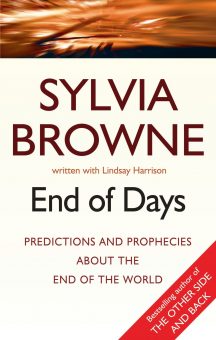whence He shall come to judge the living and the dead.
I believe in the Holy Spirit, the holy catholic [universal] church,
the communion of saints,
the forgiveness of sins,
the resurrection of the body,
and life everlasting.
Amen.
- The Universal Judgment
Following the resurrection of all earthly flesh, Christ will sit upon the throne of judgment and, one by one, each of us will be given the justice our works in the world deserve.
For the Son of man is to come with his angels in the glory of his Father, and then he will repay every man for what he has done. (Matthew 16:27)
- The World’s Destruction
At the command of Jesus Christ, the world will be destroyed, not by man’s handiwork or by geological destruction or a cosmic collision but by purely supernatural means.
- The Victory and Reign of the Church
Christ and every one of his faithful believers live and reign together forever, while all who pursue evil and give their allegiance to the devil are damned for all eternity.
The Catholic Church fully anticipates the second physical manifestation of Christ, often called the Parousia, which is Greek for presence, or coming. But it also emphasizes that it’s not as if Jesus left the earth after His Resurrection and has been absent ever since. His spirit is among us every minute of every day of every year, as He promised when He appeared to His disciples at Galilee after the death of his body:
All authority in heaven and on earth has been given to me. Go therefore and make disciples of all nations, baptizing them in the name of the Father and of the Son and of the Holy Spirit, teaching them to observe all that I have commanded you; and
lo, I am with you always, to the close of the age. (Matthew 28:18-20)
I will not leave you desolate. I will come to you. Yet a little while, and the world will see me no more, but you will see me; because I live, you will live also. In that day you will know that I am in my Father, and you in me, and I in you.
( John 14:18-20)
Three of the most famous and controversial prophecies about the end of days had their origins in the Catholic Church. And the voices who uttered them are as fascinating as the prophecies themselves.
PADRE PIO
On June 16, 2002, Padre Pio, an Italian priest born in 1887, was elevated to sainthood by the Roman Catholic Church. He was renowned for his piety, his charitable works, his suffering, his occasional severity, and his divinely directed, controversial supernatural powers, from healings to prophesying. Perhaps most extraordinary and controversial of all was Padre Pio’s bearing of the stigmata—wounds in his hands and feet that corresponded with the wounds inflicted on Christ at his Crucifixion.
The day after his birth, Padre Pio was baptized Francesco Forgione, and he was raised by an intensely devout Catholic family. He was ten years old when he was drawn to a young Capuchin friar who was traveling through the area, who inspired him to announce to his parents, “I want to be a friar with a beard.” His ecstatic parents pursued their son’s passion with a lot of traveling and a private tutor, and on January 22, 1903, at the age of fifteen, Francesco Forgione became Padre Pio, selecting his name in honor of Saint Pius V.
Seven years later he became an ordained priest. One morning shortly after his ordination, as legend has it, he was deep in prayer when Jesus and the Holy Mother appeared to
Pages: 1 2 3 4 5 6 7 8 9 10 11 12 13 14 15 16 17 18 19 20 21 22 23 24 25 26 27 28 29 30 31 32 33 34 35 36 37 38 39 40 41 42 43 44 45 46 47 48 49 50 51 52 53 54 55 56 57 58 59 60 61 62 63 64 65 66 67 68 69 70 71 72 73 74 75 76 77 78 79 80 81 82 83 84 85 86 87 88 89 90 91 92 93 94 95 96 97 98 99 100 101 102 103 104 105 106 107 108 109 110 111 112 113 114 115 116 117 118 119 120




